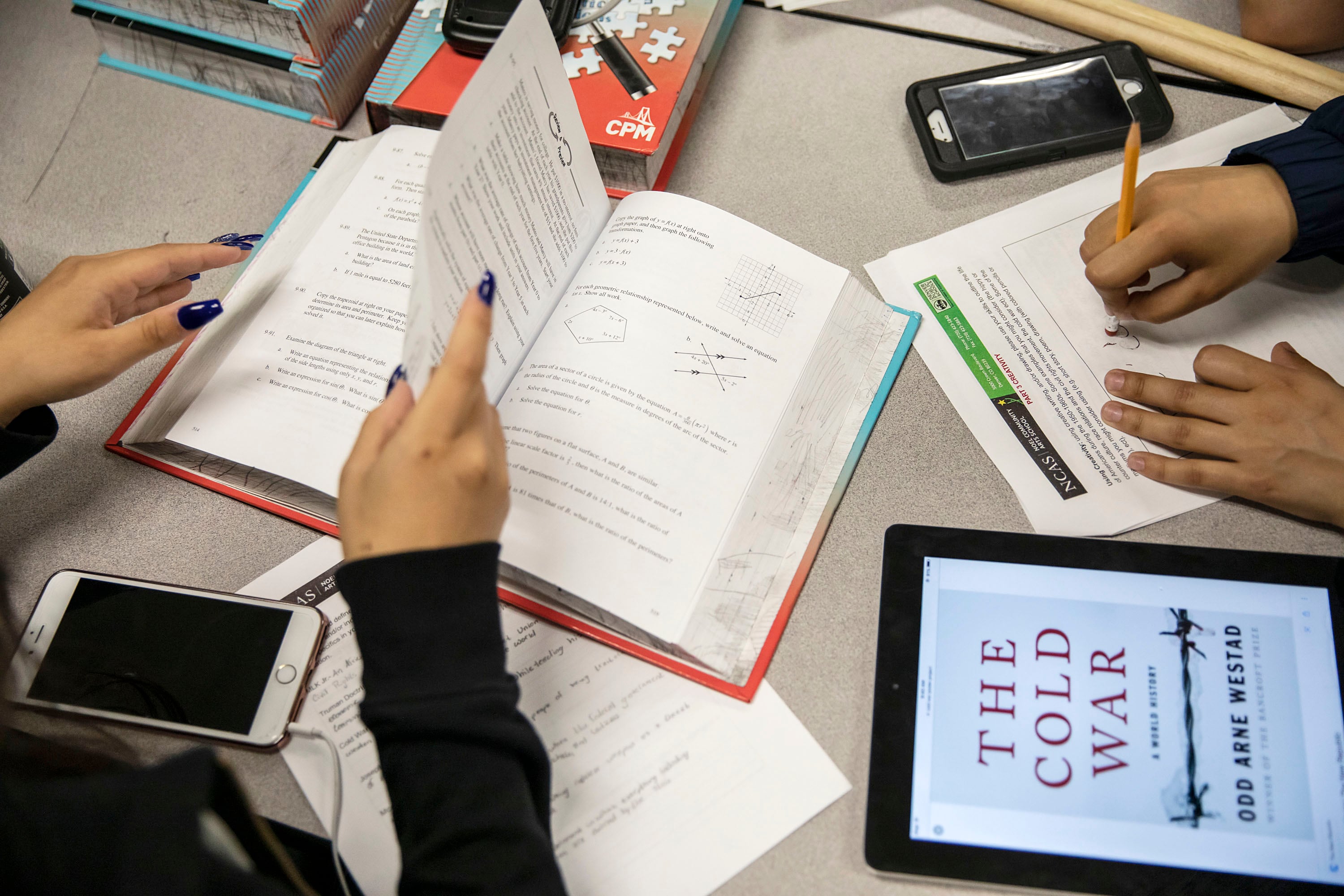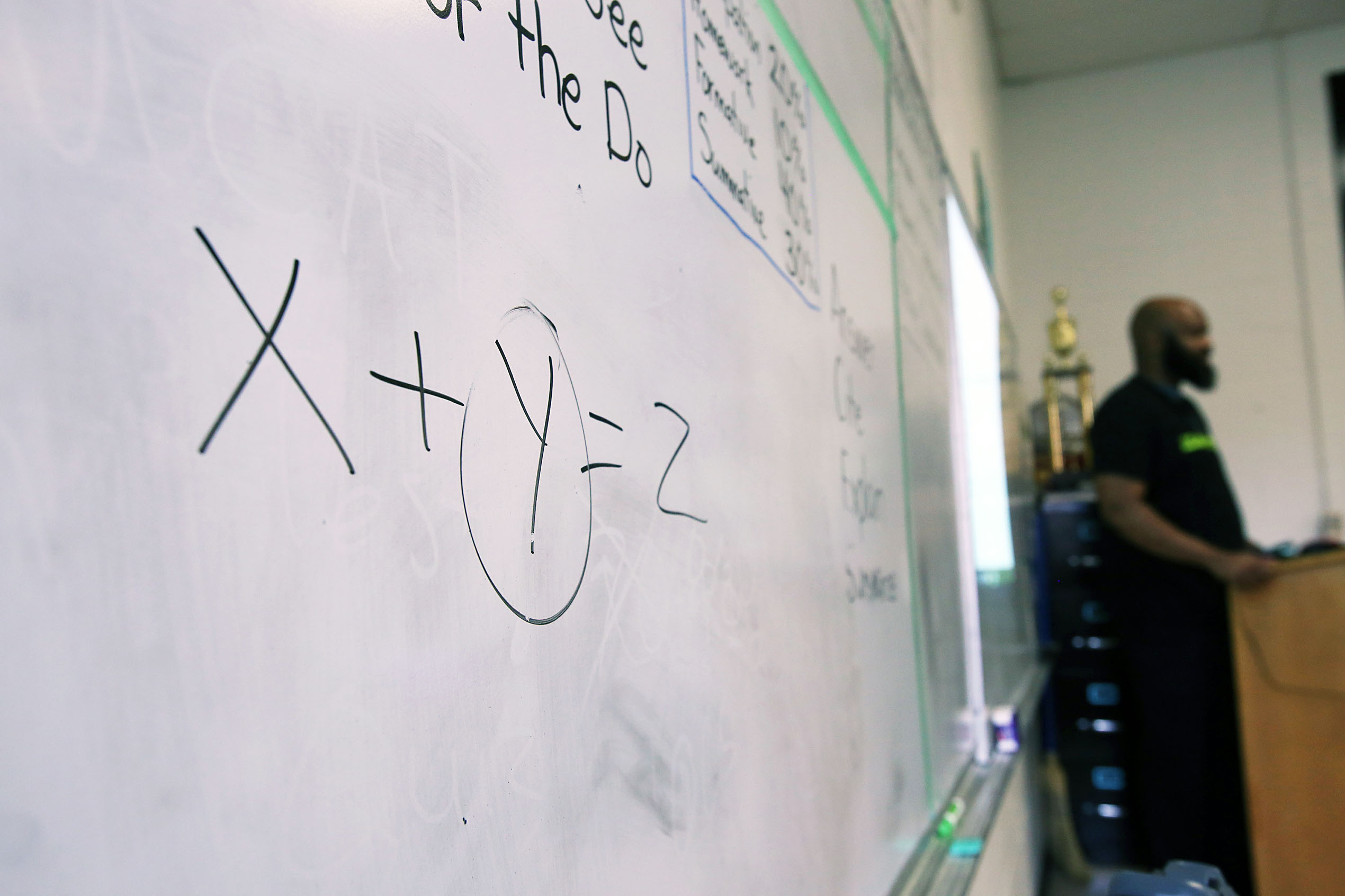Sign up for our free monthly newsletter Beyond High School to get the latest news about college and career paths for Colorado’s high school grads.
Colorado would need to spend $3.5 billion to $4.1 billion more to adequately resource K-12 public schools and help students learn, according to two studies released Friday.
The studies, commissioned by state lawmakers and conducted by two independent groups, offer different models and figures to adequately fund schools. But they similarly say Colorado should dramatically increase K-12 spending beyond the $9.8 billion budgeted this year — an argument education advocates have made for years.
“The studies contain recommendations for increased funding, highlighting the challenges our schools face in providing every student — especially those with the greatest needs — the opportunities they deserve to thrive,” said Susana Córdova, Colorado education commissioner.
Córdova said the reports have been submitted to the General Assembly. It’s now up to lawmakers, who will convene next week, to decide how they want to proceed.
First, they’ll need to decide which of the two policy models offered in the reports they want to adopt — if they move forward at all. Then they will need to figure out how to increase the tax base to boost funding for schools.
The second point is especially important because the dramatic increase in funding the studies call for will likely be difficult based on the state’s tax collections.
This year, despite the state taking in more revenue, lawmakers are eyeing budget cuts to the state government to fulfill obligations in Medicaid costs and provide more funding for K-12 schools. The state has also struggled in past years to increase school funding at the minimum yearly level set by the state’s Constitution.
Future years’ revenue also likely won’t produce large windfalls that could cover such a massive increase unless lawmakers make changes.
What is an adequate level of funding?
The studies are part of a larger examination of the state’s funding landscape ordered by lawmakers in 2023.
The legislation created a School Finance Task Force, which last year recommended a revamp of the state’s 30-year-old school funding formula. Lawmakers acted, and the state is expected to spend $500 million more over six years to implement the formula. The formula aims to more equitably distribute resources to districts serving higher numbers of at-risk students, such as students from lower-income backgrounds, as well as small and rural schools.
However, the task force remained silent on the adequate amount of funding needed for schools. Task force members said formula changes would help guide future investments, such as those recommended Friday by the two research firms.
One study was conducted by the American Institutes for Research, or AIR, and the other by Augenblick, Palaich and Associates, Inc., or APA, in partnership with Picus, Odden & Associates, Afton Partners, and the Colorado School Finance Project.
The studies differ in their approach to how to spend the billions in K-12 investment. Currently, Colorado funds students at a base level and then adds money into district budgets based on student and district characteristics. The studies offer differing policies on which students get the most money.
What does the APA study say?
The APA report calls for about $3.5 billion more than what the state currently spends. It says the state should spend more money on all students, while giving districts a smaller additional amount to increase services for students with the highest needs.
The APA model dramatically increases the base spending per student to $12,346, well above the $$8,726 the study says the base is now. It then makes slight adjustments to the additional money schools get for different student characteristics already within the state’s current formula, such as students who are from lower-income backgrounds, those who need English-language services, or those who have disabilities.
The base cost would allow school leaders to pay for more staff and support as determined by the district. The additional staff and resources would support all students. Then the adjustments for student characteristics would go to supporting those specific students.
What does the AIR study say?
The AIR study calls for about $4.1 billion over what the state currently spends. The study sends less money to the districts for all students than the APA study, but sends much more money to be used on students with the highest needs. That means schools would get less overall for all students.
But schools would get more than double the base spending to support those students that have disabilities, who are English language learners, or who are from lower-income backgrounds.
Overall, this means that districts with a larger population of students with higher needs would get dramatically more money under this model.
The organization’s analysis says schools that serve students with the highest needs “have systematically lower student outcomes.”
The studies agree on higher teacher pay, more equitable taxes
Colorado should spend more money on teachers, both studies found, with AIR concluding that the state’s teachers are “poorly paid and inequitably distributed.”
The APA study also says more resources will help districts pay for higher teacher salaries. In Colorado, teacher pay is a local decision.
Schools that serve many students living in poverty have lower paid, less experienced teachers and higher teacher-to-student ratios, AIR and APA found. Such schools also receive less state and local funding than similar schools in wealthier communities, the studies said.
“With more adequate funding levels and funding more strongly distributed based on student needs, Colorado’s school districts — and particularly those with high student needs — would be able to address issues of teacher pay and hire more teachers,” the AIR study said.
Both studies also agreed that Colorado should address inequities in local tax revenue that helps fund schools. Districts with high property wealth can raise more money than districts with low property wealth while at the same time maintaining low tax rates. Districts with low property wealth tax their residents more but generate less school funding from it.
The result, the AIR study said, is “that students who reside in wealthier areas typically attend better funded schools.”
Colorado Bureau Chief Melanie Asmar contributed.
Jason Gonzales is a reporter covering higher education and the Colorado legislature. Chalkbeat Colorado partners with Open Campus on higher education coverage. Contact Jason at jgonzales@chalkbeat.org.






